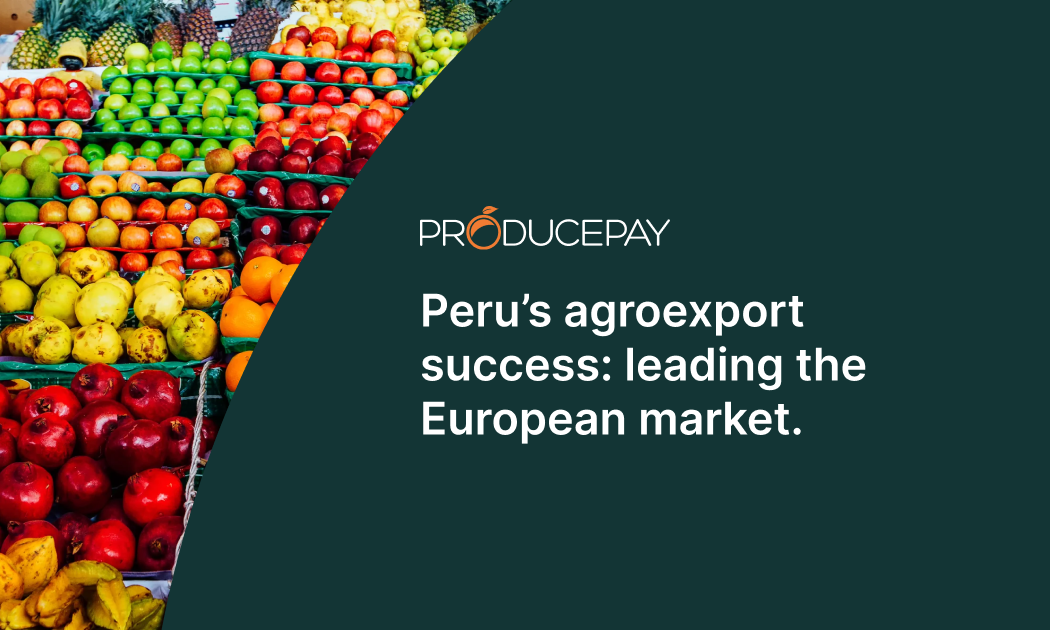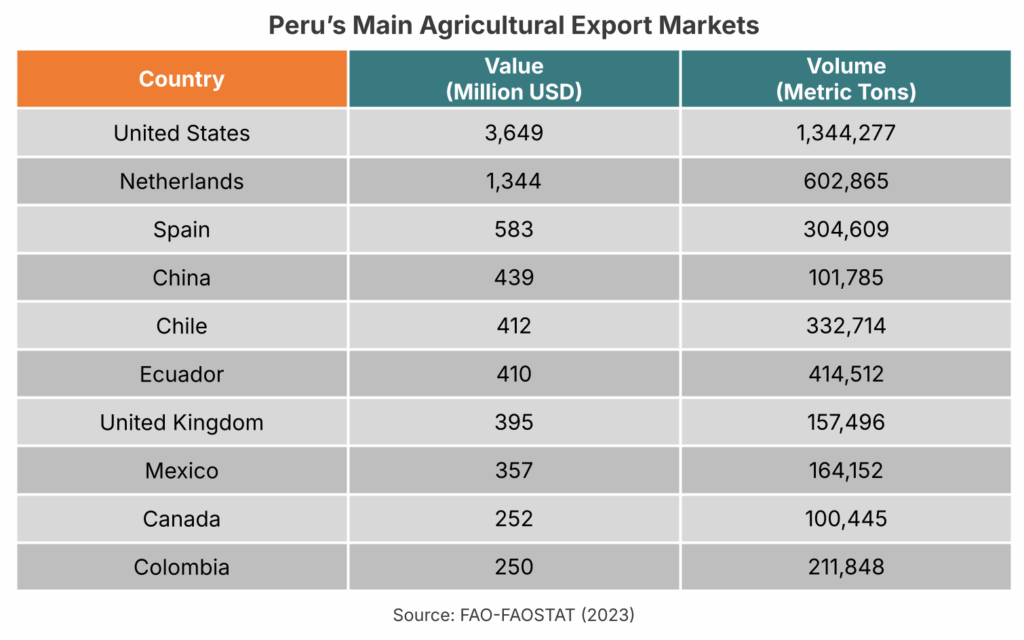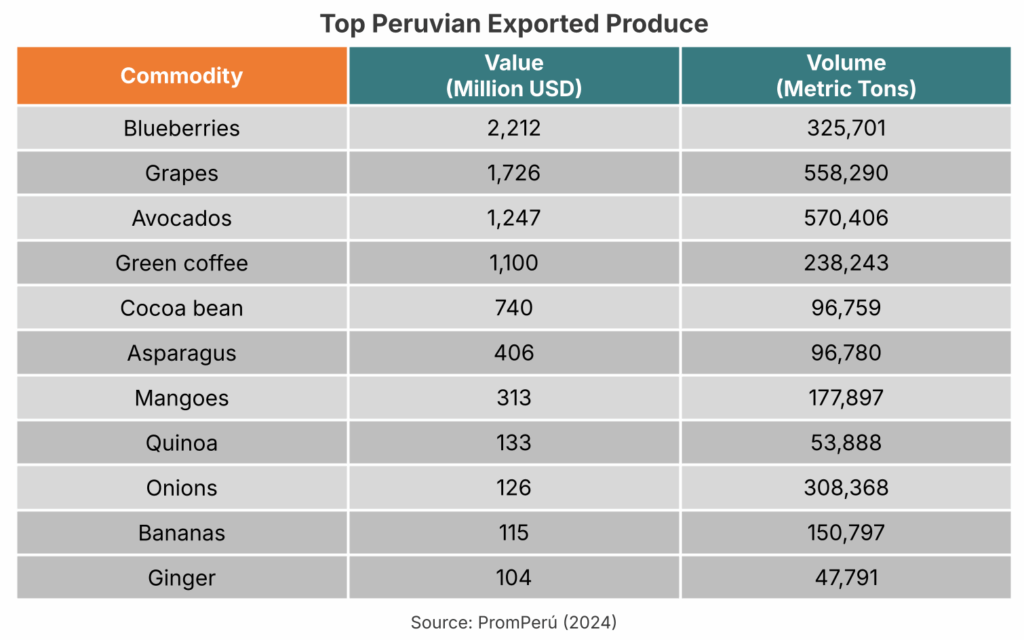
Peru’s agroexport success: leading the European market.
(Updated: July 29, 2025)
Peru has emerged as a global leader in agricultural exports, driven by a combination of high-quality crops, favorable climate diversity, and strong commitment to sustainability.
With Europe and the United States as its main buyers, Peru’s agricultural exports continue to scale and remain competitive in the global market. In 2024, the country’s exports surpassed $12 billion, a 22% increase from 2023.
Growing demand: Europe & U.S. take the lead
Peru is Europe’s leading agricultural supplier, shipping 30% of its total agricultural exports to the region, valued at $3.18 billion. The Netherlands receives 44% of that volume, with avocados as the top product—over 190,000 tons.
Meanwhile, the United States has become Peru’s top export destination, importing $3.65 billion in agri-exports, according to FAO data. Grapes lead the U.S. market, accounting for almost half of the total volume exported—over 647k tons valued at $846 million.
Other key destinations include Spain, China, Chile, Ecuador, the United Kingdom, Mexico, Canada and Colombia.
Discover the European fresh produce outlook for 2025

Top exported agricultural products from Peru
Among the big variety of agricultural products Peru exports, fresh produce stands out. Blueberries, grapes, avocados, and green coffee are the country’s top exported commodities—each generating over $1 billion.
Additionally, Peru is the world’s largest exporter of blueberries, grapes, asparagus, and quinoa, and the second-largest exporter of avocados and ginger.
1. Blueberries
With $2.21 billion in exports and 325,701 tons shipped, blueberries are Peru’s most valuable agricultural export in 2024. Value grew by 32.5% and volume by 57.6% compared to 2023, despite a 16% drop in prices.
The United States is the top buyer, receiving 64% of shipments, followed by the Netherlands (16%) and the UK (6.4%). The high season runs from August to December.
2. Grapes
Grapes ranked second with $1.73B in export value and 558,290 tons shipped. While volume dropped 13.9%, value remained relatively stable (-2.3% year-over-year) thanks to a 13.5% increase in prices.
The U.S. is again the main destination (60%), followed by Mexico (9.5%), and the Netherlands (7.8%). The peak season is November–December.
3. Avocados
Avocados brought in $1.25 billion in 2024. Despite a 4.8% decrease in volume, value rose 29.4% thanks to a 36% price increase.
Top destinations of Peruvian avocados are The Netherlands (35%), Spain (18.6%), and the U.S. (12%), with peak demand in September and October.
Predictable Commerce securing future trade
In a global market where fresh produce trade is often impacted by volatility, delays, and uncertainty, Predictable Commerce Programs offer a smarter path forward.
These strategic sourcing programs are designed to unlock growth by aligning buyer demand with grower supply, creating end-to-end, integrated solutions that support consistency and efficiency across the entire value chain.
Through real-time quality control, financing support, and full supply chain visibility, we help build 52-week programs tailored to each commodity’s needs—ensuring the right product reaches the right market.
By combining solutions, Predictable Commerce Programs empower all stakeholders to reduce risk, improve planning, and scale with confidence—season after season.
Source: FAOSTAT, Exportemos.pe, FreshFruitPortal


